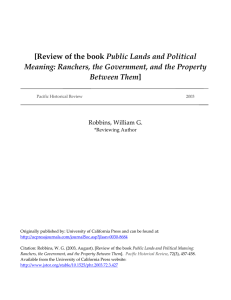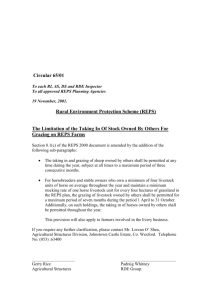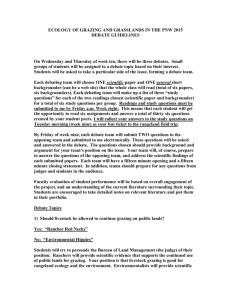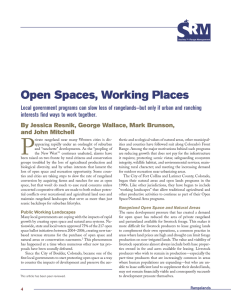- Sierra Club
advertisement
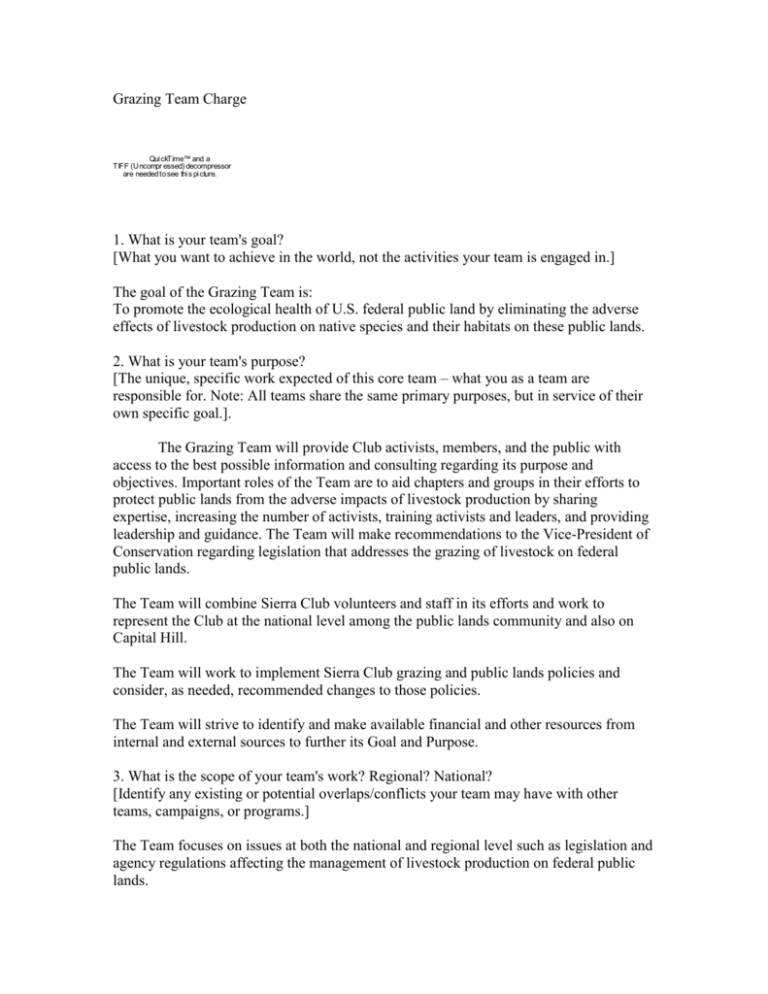
Grazing Team Charge Qui ckTime™ and a TIFF (U ncompr essed) decompressor are needed to see thi s pi cture. 1. What is your team's goal? [What you want to achieve in the world, not the activities your team is engaged in.] The goal of the Grazing Team is: To promote the ecological health of U.S. federal public land by eliminating the adverse effects of livestock production on native species and their habitats on these public lands. 2. What is your team's purpose? [The unique, specific work expected of this core team – what you as a team are responsible for. Note: All teams share the same primary purposes, but in service of their own specific goal.]. The Grazing Team will provide Club activists, members, and the public with access to the best possible information and consulting regarding its purpose and objectives. Important roles of the Team are to aid chapters and groups in their efforts to protect public lands from the adverse impacts of livestock production by sharing expertise, increasing the number of activists, training activists and leaders, and providing leadership and guidance. The Team will make recommendations to the Vice-President of Conservation regarding legislation that addresses the grazing of livestock on federal public lands. The Team will combine Sierra Club volunteers and staff in its efforts and work to represent the Club at the national level among the public lands community and also on Capital Hill. The Team will work to implement Sierra Club grazing and public lands policies and consider, as needed, recommended changes to those policies. The Team will strive to identify and make available financial and other resources from internal and external sources to further its Goal and Purpose. 3. What is the scope of your team's work? Regional? National? [Identify any existing or potential overlaps/conflicts your team may have with other teams, campaigns, or programs.] The Team focuses on issues at both the national and regional level such as legislation and agency regulations affecting the management of livestock production on federal public lands. 4. What have you accomplished in 2008 and in the past few years? [This need not be exhaustive, but will be useful to communicate to potential new volunteers.] Recent accomplishments include • Production of a PowerPoint presentation about impacts of livestock production on federal public lands. • Production of a brochure about environmental impacts of livestock production on federal public lands. Provided seed grants to aid groups or chapters with monitoring, commenting, appealing and litigating grazing decisions from federal land management agencies. Production and website installation of a "Back Country Assessment Form" that individuals can use to report impacts of livestock production on public lands to state of federal land managers. Advocated for federal legislation that would allow voluntary relinquishment of federal grazing permits in return for federal compensation to permit holders and permanent retirement of the associated allotments. 5. What are you going to be working on in 2009? [This can include fully-imagined plans or general ideas, and can be edited later, and fleshed out in the team template and/or budget request.] Ongoing advocacy for federal legislation allowing voluntary relinquishment of federal grazing permits with government-funded compensation to permit holders and permanent retirement of the associated grazing allotments. 6. How can volunteers get involved? [List ways to engage new volunteers, experienced volunteers, and leaders. Examples: writing letters, sending action alerts, commenting on news and blog sites outside the Sierra Club, writing news summaries, hosting online discussions, proofreading. Think of it as help wanted list.] Tasks/opportunities for new volunteers: Sending letters pertaining to legislation or land management agency regulations involving livestock production on public lands. Writing editorial letters to newspapers or blogs about impacts of livestock production on public lands. Tasks/opportunities for experienced volunteers: Resource monitoring, counting livestock on grazing allotments, commenting on grazing decisions from federal land management agencies. Tasks/opportunities for leaders: Appealing and litigating grazing management decisions from federal land management agencies. Training of volunteers in resource monitoring. Presenting grazing slide show to groups and chapters of the Club as well as to other organizations. 7. What resources does your team want to share and/or develop? [Fact sheets, testimony, white papers, toolkits, videos, photos, speeches, powerpoints, guidelines, etc. Please attach below if possible.] • PowerPoint slide show of grazing issues and impacts (http://www.sierraclub.org/grazing/slideshow.asp) • click and send on legislation (TO BE DEVELOPED) • web-based updates (http://www.sierraclub.org/grazing/news/alert.asp) • raise money 8. Who is on your core team? [Names and roles and/or expertise.] Core team members are: Mike Hudak (Chair), Mark Salvo (Budget Manager), Stan Haye (Secretary), George Wuerthner, Robert Warrick, Katie Fite, Greta Anderson, Kristin Ruether 9. Notes and Questions [Please share questions, concerns, ideas here.]


